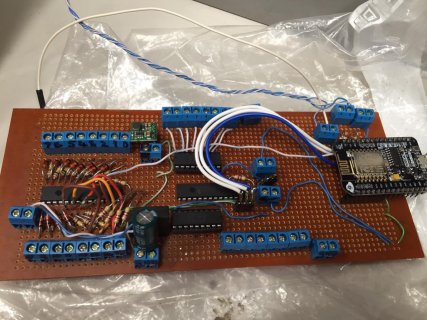Hello
I have an old Clipsal security system which has 8 PIR sensors feeding to it.
I was hoping to steal the PIR state info from this to a teensyLC or similar 3.3v logic level device.
The clipsal panel requires end of line resistors on PIRs so it can detect these three states:
open circuit (line cut or PIR triggered) and alarm
short circuit (line bridged) and alarm
2k2ohm (all good)
The voltages I have at the panel for each of the 8 zones is:
13.8VDC when PIR is triggered.
6.8VDC when in normal untriggered state (13.8VDC pulled down by 2k2ohm load).
I have 2 issues.
1. Any wiring i connect from clipsal panel zones to my teensy needs to be sufficiently high impedance load to prevent tripping circuit. I'll aim for infinite.
2. Needs to convert 6.8V to 0 and 13.8 to 3.3v so teensy can detect as high/low. My electronics knowledge doesn't extend much past voltage dividers which won't cut it here.
What are some simple ways to achieve this.
Thanks.
I have an old Clipsal security system which has 8 PIR sensors feeding to it.
I was hoping to steal the PIR state info from this to a teensyLC or similar 3.3v logic level device.
The clipsal panel requires end of line resistors on PIRs so it can detect these three states:
open circuit (line cut or PIR triggered) and alarm
short circuit (line bridged) and alarm
2k2ohm (all good)
The voltages I have at the panel for each of the 8 zones is:
13.8VDC when PIR is triggered.
6.8VDC when in normal untriggered state (13.8VDC pulled down by 2k2ohm load).
I have 2 issues.
1. Any wiring i connect from clipsal panel zones to my teensy needs to be sufficiently high impedance load to prevent tripping circuit. I'll aim for infinite.
2. Needs to convert 6.8V to 0 and 13.8 to 3.3v so teensy can detect as high/low. My electronics knowledge doesn't extend much past voltage dividers which won't cut it here.
What are some simple ways to achieve this.
Thanks.


